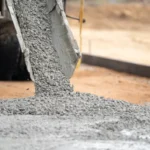Limestone is more than just a rock; it’s a testament to nature’s artistry and human ingenuity. This sedimentary marvel, formed from the skeletal fragments of marine organisms millions of years ago, has become a cornerstone in construction, architecture, and beyond. In this blog post, we’ll delve into the fascinating world of limestone, exploring its origins, properties, and the myriad ways it enhances our lives.
The Formation of Limestone
Limestone’s journey begins in clear, warm, shallow marine waters. Over millions of years, the accumulation of shells, coral, alga, and other marine life forms compress and solidify, giving birth to limestone. This process results in a rock that not only tells the ancient history of the Earth but also serves as a record of past marine ecosystems.
Properties and Types of Limestone
What sets limestone apart is its diversity and adaptability. Predominantly composed of calcium carbonate (CaCO3), limestone varies greatly in color, texture, and hardness, which are determined by its formation and subsequent geological processes. This variability results in several types of limestone, each with unique qualities:
- Chalk: Soft, white, and fine-grained, chalk is famous for its use in classrooms around the world.
- Coquina: Composed of shell fragments, coquina is lightweight and porous.
- Travertine: Formed in mineral springs, travertine boasts a fibrous, marble-like appearance.
- Tufa: Similar to travertine but formed in a different type of freshwater environment.
- Oolitic Limestone: Comprised of small, spherical grains called ooids.
Limestone in Architecture and Construction
Limestone’s appeal in construction and architecture lies in its durability, workability, and beauty. It has been used throughout history in some of the world’s most iconic structures, such as the Great Pyramids of Giza and the Parthenon in Athens. Today, it remains a popular choice for facades, flooring, and ornamental features in buildings around the globe.
Durability and Versatility
One of limestone’s most significant advantages is its resistance to weathering and erosion, making it an ideal material for exterior and structural applications. Additionally, its versatility allows for a wide range of textures and finishes, catering to various aesthetic and functional requirements.
Sustainability
Limestone’s natural abundance and ease of extraction make it a more sustainable choice compared to other building materials. Its ability to withstand the test of time also means structures built with limestone contribute to less waste and environmental impact over the long term.
Limestone Beyond Construction
The uses of limestone extend far beyond construction. It plays a crucial role in manufacturing cement and lime, purifying iron in blast furnaces, and even in the production of glass and paper. Furthermore, powdered limestone is a key ingredient in soil conditioner to neutralize acidic soils.
Preserving Limestone’s Legacy
As we continue to rely on limestone for its beauty and utility, it’s essential to implement sustainable quarrying practices. Protecting the natural landscapes from which limestone is harvested ensures that this remarkable resource remains available for future generations to admire and utilize.
Conclusion
Limestone’s blend of beauty, durability, and versatility has cemented its place in human history and culture. As we marvel at the structures and products made possible by this ancient rock, it’s clear that limestone will continue to play a pivotal role in our lives for centuries to come. Whether in the majestic facades of our cities’ landmarks or the subtle elegance of a kitchen countertop, limestone’s legacy is as enduring as the rock itself.

 |
|  |
| 
